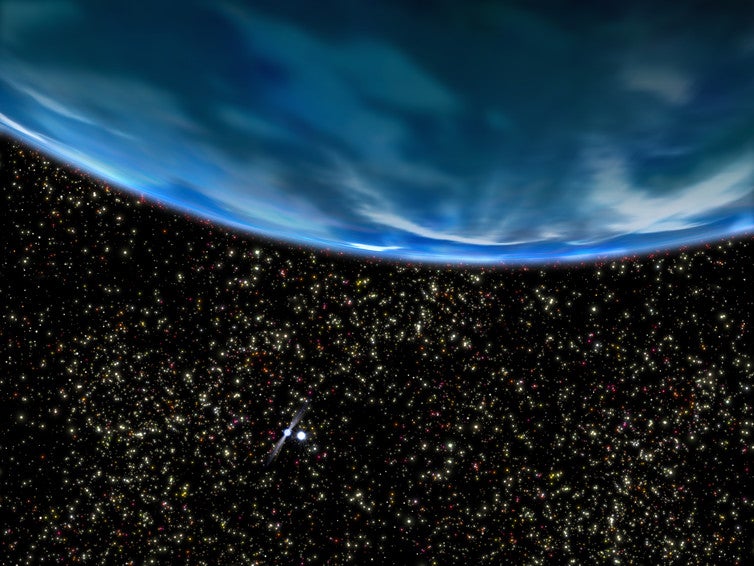The Independent's journalism is supported by our readers. When you purchase through links on our site, we may earn commission.
Mysterious signals from distant galaxy spark row over whether they could be from aliens
'Invoking aliens as a potential solution to an ongoing mystery is lazy,' complains science writer

Mysterious signals detected in a distant galaxy by astronomers working for Stephen Hawking’s project to find alien life have sparked a debate over whether they could be from UFOs.
The £77m Breakthrough Listen project (BL) recently picked up 15 fast radio bursts (FRBs) from an unknown source, leading to speculation they came from neutron stars, black holes or extraterrestrial technology across the universe.
Scientists have previously observed 24 similar signals since the initiative to discover alien civilisations was set up by Professor Hawking and Russian billionaire Yuri Milner in January 2016.

One source of repeated radio bursts, known as “FRB121102”, was identified in a dwarf galaxy around three billion light years away from Earth in 2012.
BL director Andrew Siemion told The Guardian: “Whether or not fast radio bursts turn out to be signatures of extraterrestrial technology, Breakthrough Listen is helping to push the frontiers of a new and rapidly growing area of our understanding of the universe around us.”
Reacting to the news on Twitter, Emmy-nominated Emily Calandrelli, host of Xploration Outer Space, said: "This is exciting because it *could* mean ALIENS! But..it could also be a black hole, or rotating neutron stars. More research is needed.
The comment prompted National Geographic writer Nadia Drake to say: “Invoking aliens as a potential solution to an ongoing mystery is lazy.”
“Things can go bump (or burst!) in the cosmos and be compelling/fascinating/intriguing without being ALIENS!” she added.
Ms Calandrelli said: “I have to disagree with this. I think this argument ignores the fact that most of general pop cares about aliens and not, say, neutron stars.
“If the Breakthrough Listen project is involved, it seems like you’re leaving information out by *not* referencing aliens.”
Ms Drake, who wrote about the Listen project's observations for Nat Geo, later pointed out that it had not been studying the FRBs and hoping to find evidence of an alien transmission.
"I'm not saying that discussing the possibility of extraterrestrial involvement should never be done, but it needs to be evaluated as rigorously as other hypotheses and not used a simple clickbait," she explained.
"It's also important to understand why scientists are making particular observations because, as you can see, the framing and context are crucial."
Using the Green Bank Telescope in West Virginia, the BL science team detected the bursts in the early hours of 26 August.
The strange, brief emissions that come from distant but unknown sources appear to line up, and often come from the same part of space, leading to speculation they could be intentional rather than the result of physical events.
The newly discovered bursts will also allow scientists to see more of what is actually happening than ever before, according to the scientists who detected them.
“As well as confirming that the source is in a newly active state, the high resolution of the data obtained by the Listen instrument will allow measurement of the properties of these mysterious bursts at a higher precision than ever possible before,” said Breakthrough Listen postdoctoral researcher Vishal Gajjar, who discovered the increased activity.

Scientists had initially been worried that the bursts might not be coming from space, and were actually a misunderstood signal from Earth – like when astronomers found that they had accidentally detected their own microwave.
But recent work showed that the messages are coming from outside the Earth’s atmosphere.
The recent results were published on the Astronomer’s Telegram.org
Join our commenting forum
Join thought-provoking conversations, follow other Independent readers and see their replies
Comments
Bookmark popover
Removed from bookmarks